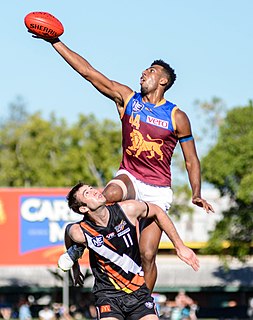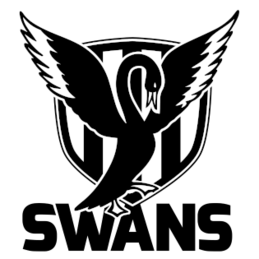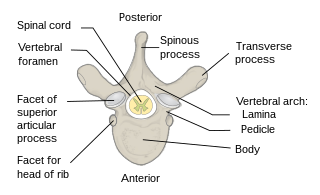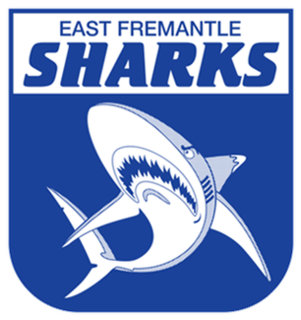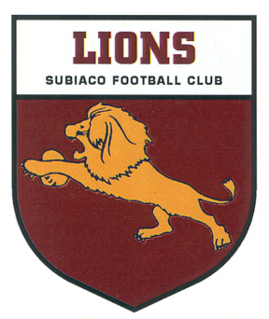Australian rules football in Western Australia is the most popular sport in the state.
John Cameron "Jack" Sheedy is a former Australian rules footballer and coach. He played for East Fremantle and East Perth in the Western Australian National Football League (WANFL) and South Melbourne in the Victorian Football League (VFL). Sheedy is considered one of the greatest ever footballers from Western Australia, and is a member of both the Australian and West Australian Football Halls of Fame. Overall, he played 360 senior football matches from 1946 to 1962, kicking 528 goals, and coached 272 games, with a winning percentage of 65%.
Cornelius John "Con" Regan was an Australian rules footballer for the East Fremantle Football Club in the West Australian National Football League (WANFL) from 1953 until 1965.
The 1934 WANFL season was the 50th season of the various incarnations of the Western Australian National Football League. Following upon numerous unsuccessful attempts to revive Midland Junction during the 1920s, Bassendean-based Swan Districts were admitted to the competition. The black and whites were more competitive than previous new clubs owing to the presence of a number of players with previous WANFL experience, including Fred Sweetapple from West Perth, captain-coach “Judda” Bee from East Fremantle and Nigel Gorn from South Fremantle, but after five promising campaigns were to endure nineteen open-age seasons without once winning as many matches as they lost.
Kenneth William "Ken" Armstrong was an Australian rules football player, coach and commentator.
The 1983 WAFL season was the 99th season of the West Australian Football League in its various incarnations. The season opened on 31 March and concluded on 17 September with the 1983 WAFL Grand Final contested between Claremont and Swan Districts.
The 1935 WANFL season was the 51st season of the Western Australian National Football League. The season saw West Perth win the premiership under the coaching of Johnny Leonard; it was the only time in West Perth's history that it won consecutive premierships, preceding a brief but exceptionally steep decline that saw the Cardinals four years later suffer the equal longest losing streak in WA(N)FL history.
The 1975 WANFL season was the 91st season of senior Australian rules football in Perth and the forty-fifth as the “Western Australian National Football League”. The season saw West Perth, after unexpectedly falling to last in 1974, rise under former Fitzroy coach Graham Campbell to a remarkable premiership win over South Fremantle by a record 104 points in front of what was then the biggest WANFL crowd on record and has since been only exceeded by the 1979 Grand Final. The Bulldogs, apart from Claremont the least successful WANFL club between 1957 and 1974, rose with arrival of Aboriginal stars Stephen Michael and Maurice Rioli to their first finals appearance in five years and began their greatest era since their golden days of the middle 1950s. With East Perth, revitalised after injuries affected their 1974 campaign, and the inconsistent but at times incomparable Swan Districts, they comprised a top four that remained unchanged for the final fourteen rounds.
The 2008 WAFL season was the 124th season of the various incarnations of the West Australian Football League, and was completely dominated by Subiaco, who not only recorded their first hat-trick of premierships but achieved a dominance over the rest of the league unrivalled in a major Australian Rules league since Port Adelaide in the 1914 SAFL season. The Lions lost once to eventual Grand Final opponents Swan Districts by the narrowest possible margin, and were previously generally predicted to achieve an undefeated season, being rarely threatened in their twenty-one victories. They finished seven-and-a-half games clear of second-placed West Perth, and convincingly won the Grand Final after trailing early.
The 1974 WANFL season was the 90th season of the various incarnations of senior football in Perth and the forty-fourth as the "Western Australian National Football League". It continued the fluctuating fortunes of clubs that had been part and parcel of the league since 1970, with East Perth, the most consistent player in the competition for eight years, missing finals participation for the only time in seventeen seasons between 1966 and 1982 due largely to injuries to key defenders Gary Malarkey, who missed the second half of the season, and Ken McAullay who did not play at all. West Perth fell from runners-up to their worst season since 1939, largely owing to the loss of 1973 leading goalkicker Phil Smith which left a gaping hole in their attack.
The 1937 WANFL season was the 53rd season of the Western Australian National Football League. The season saw numerous notable highlights, including:
- Five players kicked 100 goals, a number equalled in the major leagues of VFL/AFL, VFA/VFL, or SANFL, only in the 1939 VFA season.
- Frank "Scranno" Jenkins won the Sandover Medal in his debut season of senior football with a record high under the 3-2-1 voting system of 34 votes.
- In the second round, East Fremantle broke their own 21-year-old record for the highest score in league history.
- East Perth drew three games in one season, a feat equalled in major Australian Rules Leagues only by VFA club Moorabbin in 1958 and West Perth in 1960. The Royals could easily have drawn a fourth game but for crowd acclamation preventing umpires from hearing the bell against Subiaco on Foundation Day. No senior Australian Rules team at any level is known to have tied four matches in a season, but Geelong’s Under-19s did so in 1971.
- Swan Districts, with Ted Holdsworth kicking at least six goals in each of the first ten games, reached their first finals series in only their fourth WANFL season. Holdsworth was to reach his 100 goals in two fewer games than George Doig took in his 152-goal 1934 season, but concussion and a broken hand eliminated the prospect of a new record.
The 1973 WANFL season was the 89th season of the Western Australian National Football League. It is most famous for Subiaco breaking the longest premiership drought in the history of the competition, winning for the first time since 1924 after having been a chopping block for most of the middle third of the century. Under the coaching of former St Kilda champion Ross Smith, the Lions, as they became christened in July, bounced back from two disappointing seasons to lose only two of their final sixteen home-and-away games for their first minor premiership since 1935, then in a low-scoring Grand Final comfortably defeated a much more hardened West Perth team.
The 1938 WANFL season was the 54th season of the Western Australian National Football League, and saw Claremont, under champion coach Johnny Leonard who had transferred from West Perth, win its first premiership after losing two Grand Finals and drawing the first one this season. The blue and golds were to win the following two premierships before a long period near the foot of the ladder after Claremont Oval was gutted by a fire in 1944.
The 1972 WANFL season was the 88th season of the various incarnations of the Western Australian National Football League. It saw East Perth, after five Grand Final losses in six seasons and a frustrating seven since their last premiership in 1959, break the drought against a Claremont team that had achieved its first minor premiership since Johnny Leonard’s days, despite kicking into the wind after winning the toss.
The 1939 WANFL season was the 55th season of the various incarnations of the Western Australian National Football League. It is best known for West Perth's record losing streak of twenty-seven matches up to the fifteenth round, an ignominy equalled by Peel Thunder in their formative years but never actually beaten. The Cardinals finished with the worst record since Midland Junction lost all twelve games in 1917, and were the first WANFL team with only one victory for twelve seasons. In their only win, champion forward Ted Tyson became the first West Australian to kick over one thousand goals and he just failed to replicate his 1938 feat of leading the goalkicking for a bottom club. Subiaco, despite a second Sandover win from Haydn Bunton won only three matches, and Swan Districts, affected by the loss of star goalkicker Ted Holdsworth to Kalgoorlie, began a long period as a cellar-dweller with a fall to sixth.
The 1940 WANFL season was the 56th season of the various incarnations of the Western Australian National Football League. It saw Claremont win its third consecutive premiership, but its last before returning to the status of cellar-dweller it occupied during its first decade in the WA(N)FL – between 1943 and 1978 Claremont played finals only five times for one premiership. South Fremantle, after a lean period in the middle 1930s, displaced perennial power clubs East Fremantle and East Perth as the Tigers’ Grand Final opponent, and established some of the basis, in spite of three disastrous wartime under-age seasons, for the club’s fabled dynasty after the war.
The 1941 WANFL season was the 57th season of the various incarnations of the Western Australian National Football League. Owing to the drain of players to military service in World War II, the league was forced to suspend the reserves competition until 1946, and ultimately this was to be the last season of senior football in Perth until 1945 as the supply of available players became smaller and smaller and the Japanese military threatened northern Western Australia.
The 1969 WANFL season was the 85th season of the Western Australian National Football League. It saw continued dominance by the three Perth clubs and Subiaco, who occupied the top half of the ladder constantly from the fourth round onwards, and finished four games clear of the other four clubs, who were all in a “rebuilding” mode with varying success – late in the season both Swan Districts and Claremont fielded some of the youngest teams in the competition's history, whilst the Tigers, who fielded thirteen first-year players including Graham Moss, Russell Reynolds and Bruce Duperouzel, began disastrously but four wins in five games paved the way to impressive record from 1970 to 1972. Among the top four, Perth failed to achieve a fourth consecutive premiership that at one point looked very much in their grasp due to the overwork of Barry Cable which robbed him of some brilliance, early-season injuries to key players Iseger and Page and a couple of surprising losses to lower clubs, whilst East Perth, who won consistently without being impressive for most of the season, failed for the fourth time in as many seasons in the Grand Final, this time to West Perth and in a much more decisive manner than any of their Perth defeats.
The 1946 WANFL season was the 62nd season of senior football in Perth, Western Australia.
